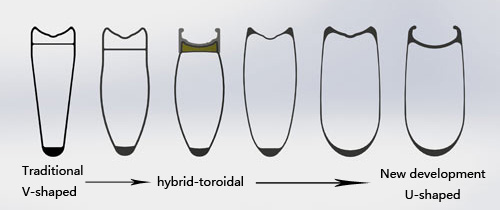06 Feb Endurance Innovation 38 – Go Faster on your Bike pt 1
Andrew and Michael kick off a new mini-series devoted to making you faster on the bike with an episode about the fastest wheels, frames, and helmets.
- 7:30 wheels
-
- Deeper is faster in conditions with side winds.
- The stronger the side wind, the greater the effect
- Rear disk wheels are an excellent choice! But they are not always allowed
- Buy newer generation toroidal or U-shaped (rounded tip) wheels. Avoid ones that come to a sharp point.
- Michael’s pick for triathlon: 60mm + disk, with a 60mm rear as backup
- Andrew’s pick: 90mm + disk
- There’s negligible aerodynamic performance difference between High end American / European brands and Chinese open mold
- +1 for aluminum brake surface wheels for improved breaking performance
-
- 28:00 frames
- Most modern triathlon frames offer very similar aerodynamic performance
- Why you should be very skeptical of aerodynamic test data presented by manufacturers
- Optimal fit is the primary factor in selecting the ‘right’ frame
- Storage integration is becoming a design consideration and competitive advantage
- 40:00 nutrition and hydration storage on non-integrated bikes
- Between the arms bottles are both aerodynamic and convenient
- Behind the saddle bottle can also be quite aero, but are harder to access
- Two versions of BTA setups and their pros and cons
- Best storage options for nutrition
- 47:30 helmets
- The optimal helmet choice is heavily influenced by the rider’s preferred head position
- Helmet priorities: safety, comfort, aerodynamics, cooling
- MIPS and similar novel safety features
- Our struggle to pronounce Chronic Traumatic Encephalopathy
- Helmet fit: front lip of the helmet should not be more than one finger width’s north of the eyebrows
- Aero recommendation: if your head is clearly above the line of your back, and you can hold it there, then a long tailed helmet is a good bet. If you keep your head low, then a short tail or tail-less helmet is the more aerodynamic choice.
- The strong case for aero road helmets: cooling and light weight
For a deeper dive into the aerodynamics of cycling, have a listen to episode 36, where we break it down.






Leonardo Guerra
Posted at 06:14h, 21 FebruaryExcellent podcast. great and professional info. Couldn’t find the 5 starts on google podcast
Have you tried the new Aeropod of velocomp, which has Cda and power measure?
Keep doing the great work.
Michael Liberzon
Posted at 10:51h, 21 Februarythanks for the kind words Leonardo! to be honest, I haven’t looked at velocomp in recent years, but I will ask Andrew about it. in the past, I was skeptical about using an aero sensor with direct power measurement because of how difficult it is to get super accurate wind and airflow data. direct measurement power meters just have far fewer potential errors. what I do like is using a sensor like aerocomp combined WITH a power meter to assess real-time aero drag.